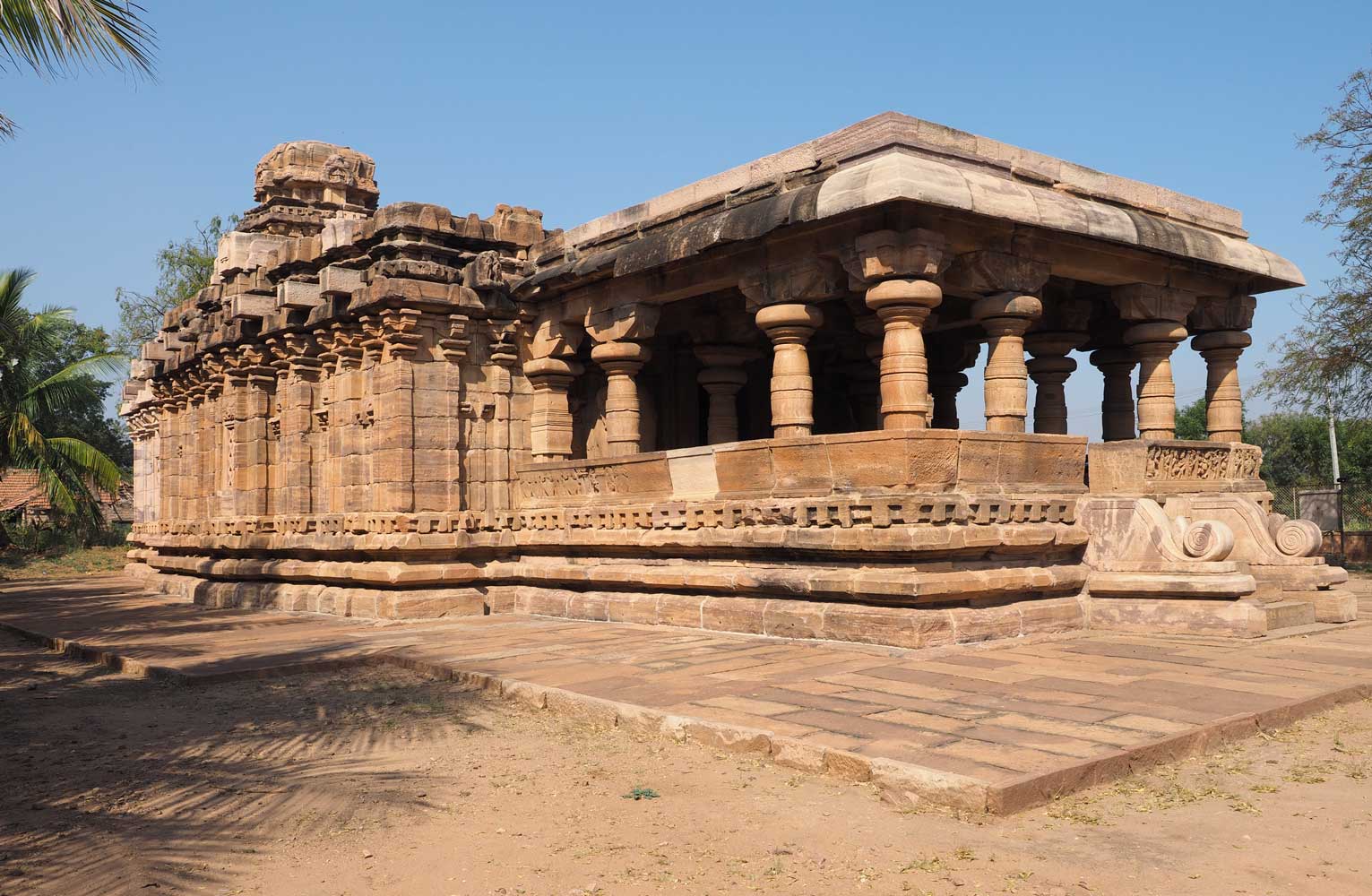
Jain temple, just outside Pattadakal
31 January Badami
(day trip to Pattadakal and Aihole)
After a quick breakfast of idly,
vadas, and tea, I walked across the road to the bus station to see about
transport to the nearby ancient temple complexes at Pattadakal and Aihole, but
on the way a driver of a three-wheeler offered to take me around to the sites
for Rs. 900. The next bus to those places would leave in about half an hour, but
I decided to go with the three-wheeler. I was glad to have my own transport not
only to save waiting for buses, but because my driver took me to many additional
places of interest. We first went to Pattadakal, detouring just before the
village to a small Jain temple, probably 9th century, on a side road. Unlike the
Jain cave temple at Badami, this one had relatively little decoration. A Shiva
lingam stands in the sanctum, but a small figure of a Jain tirthankar on the
north side confirms the temple’s Jain origin. I climbed a stone ladder inside to
the roof and a small empty shrine.

Jain temple, just outside Pattadakal
Pattadakal’s group of temples features wonderful architecture decorated with highly detailed stone reliefs—the highlight of the day. I paid the Rs. 600 and walked past the Archaeology Museum (closed today because a Friday) to the mainly 8th-century Shiva temples. Shiva lingams abound!

Schoolkids walk in front of Chandrashekhara, Galaganatha, and
Kadasiddeshwara temples.

Faces gaze out from the shikara of Galaganatha Temple.
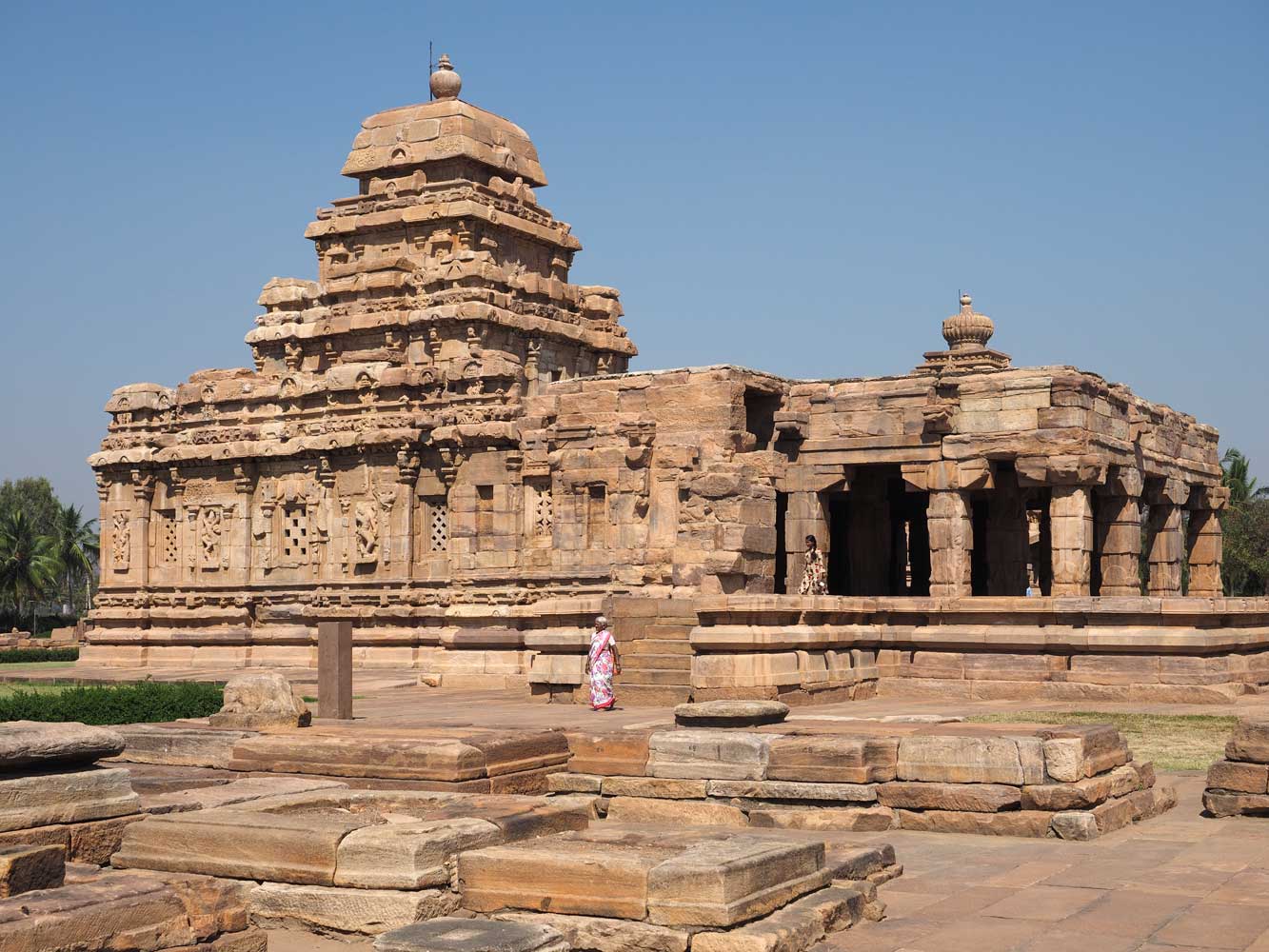
Sangameshwara Temple shows experimentation with window styles and wall
carvings.
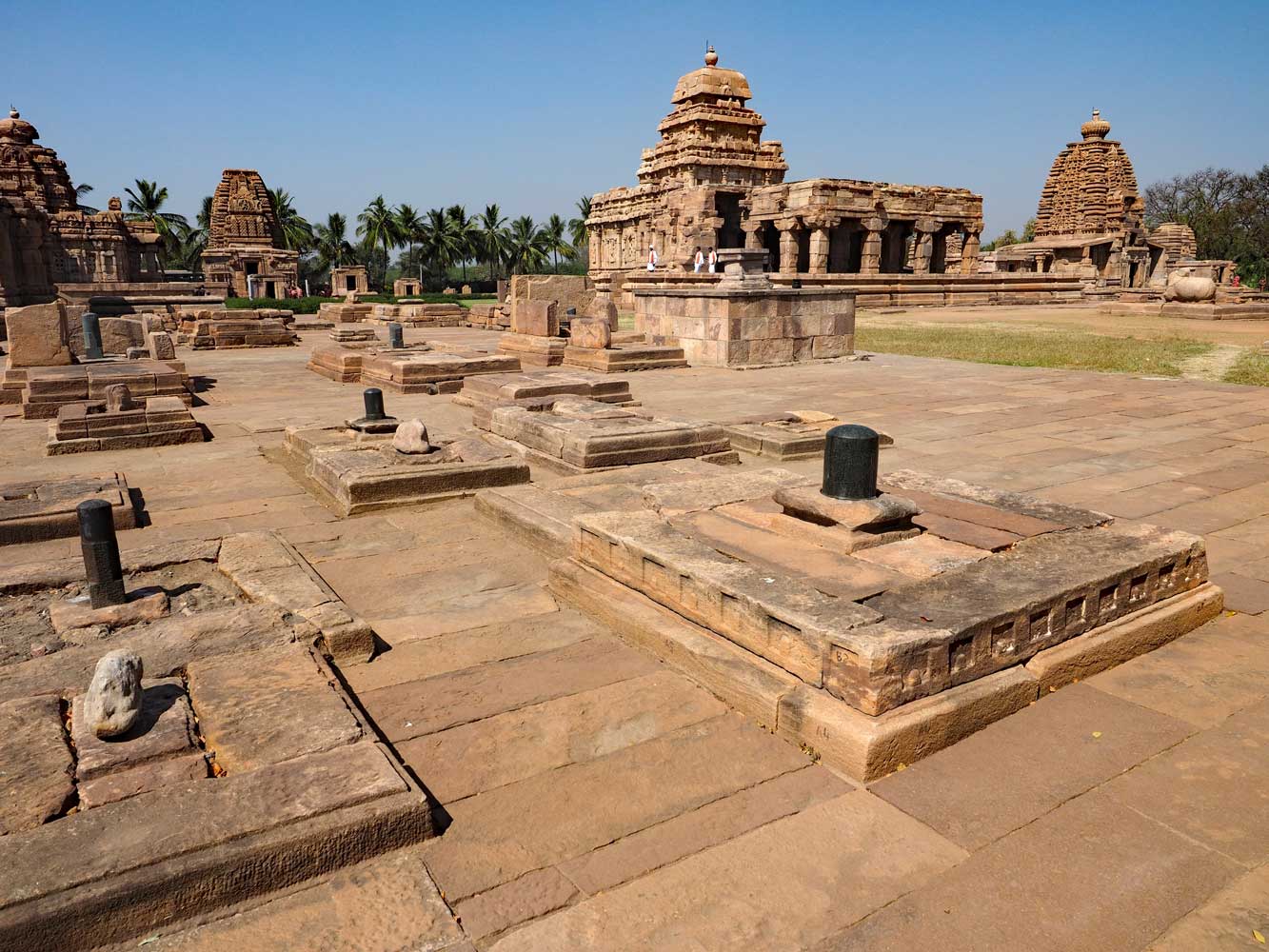
A field of Shiva lingams

Virupaksha Temple is an active temple to Shiva; Nandi resides in the shrine
on the far right.

The well-cared-for Nandi at Virupaksha Temple
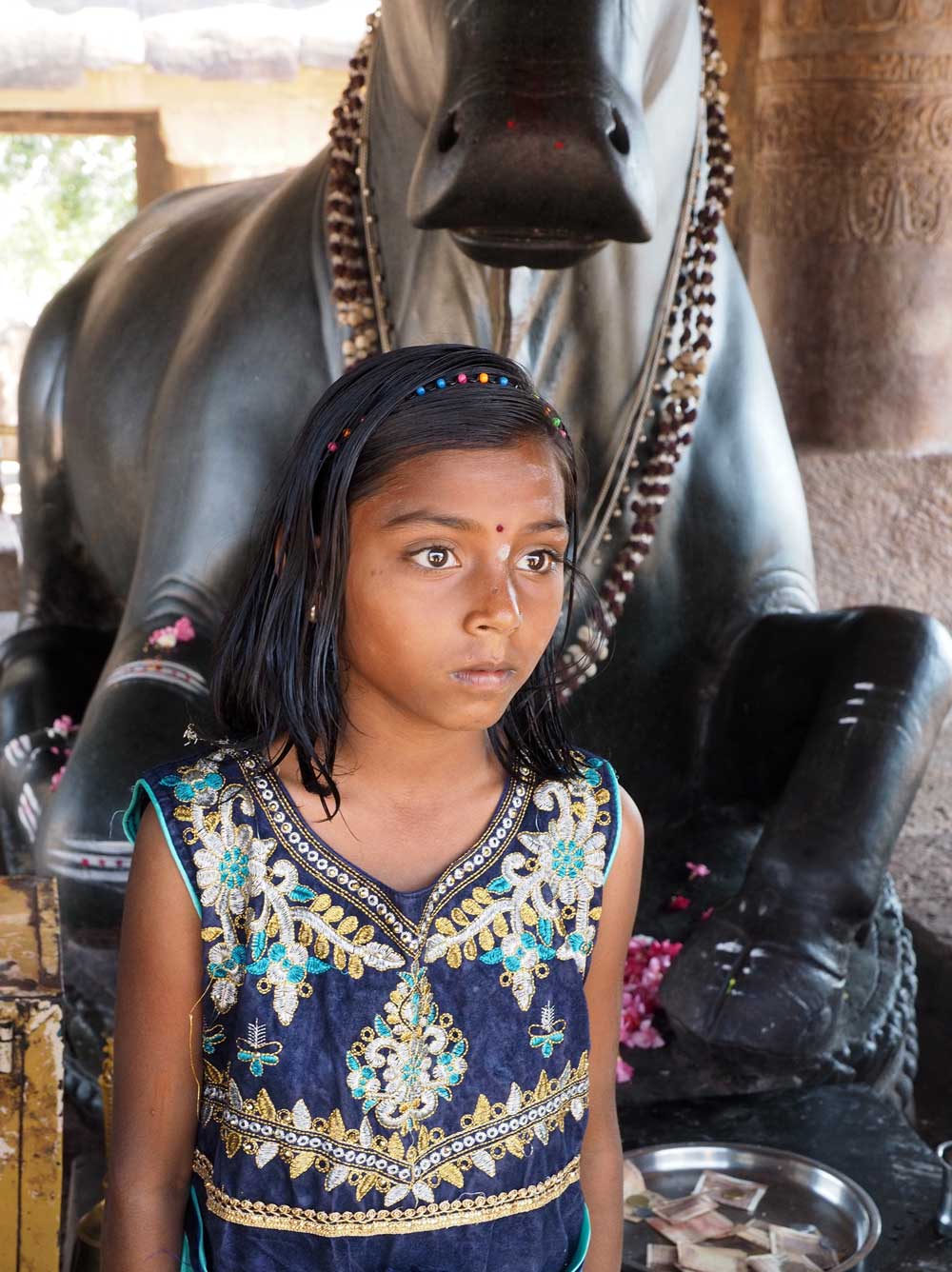
A pose in front of Nandi

Virupaksha Temple
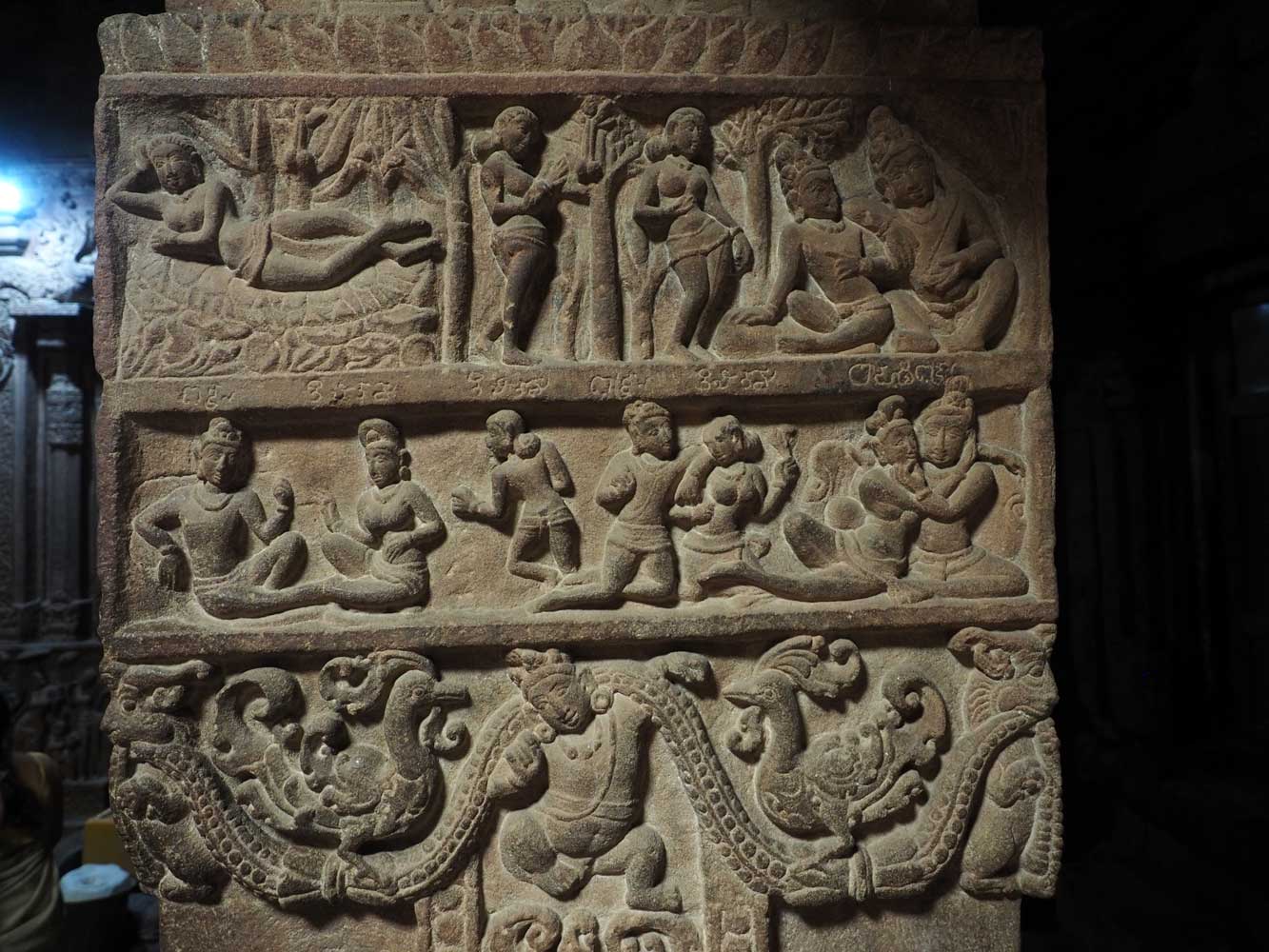
Stories on a carved pillar of Virupaksha Temple

Shiva lingam inside Virupaksha Temple
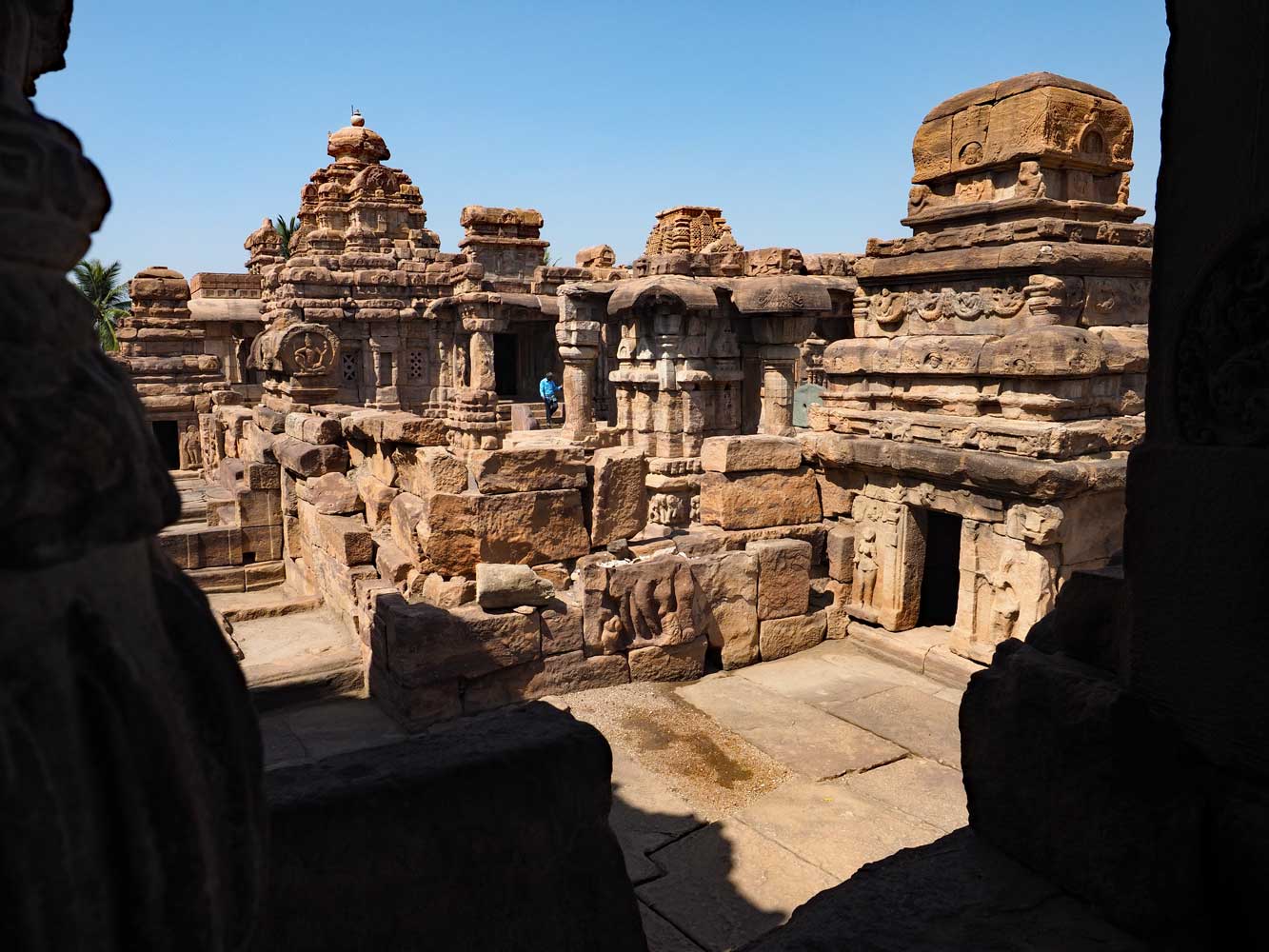
Mallikarjuna Temple (left) has a similar plan as Virupaksha.
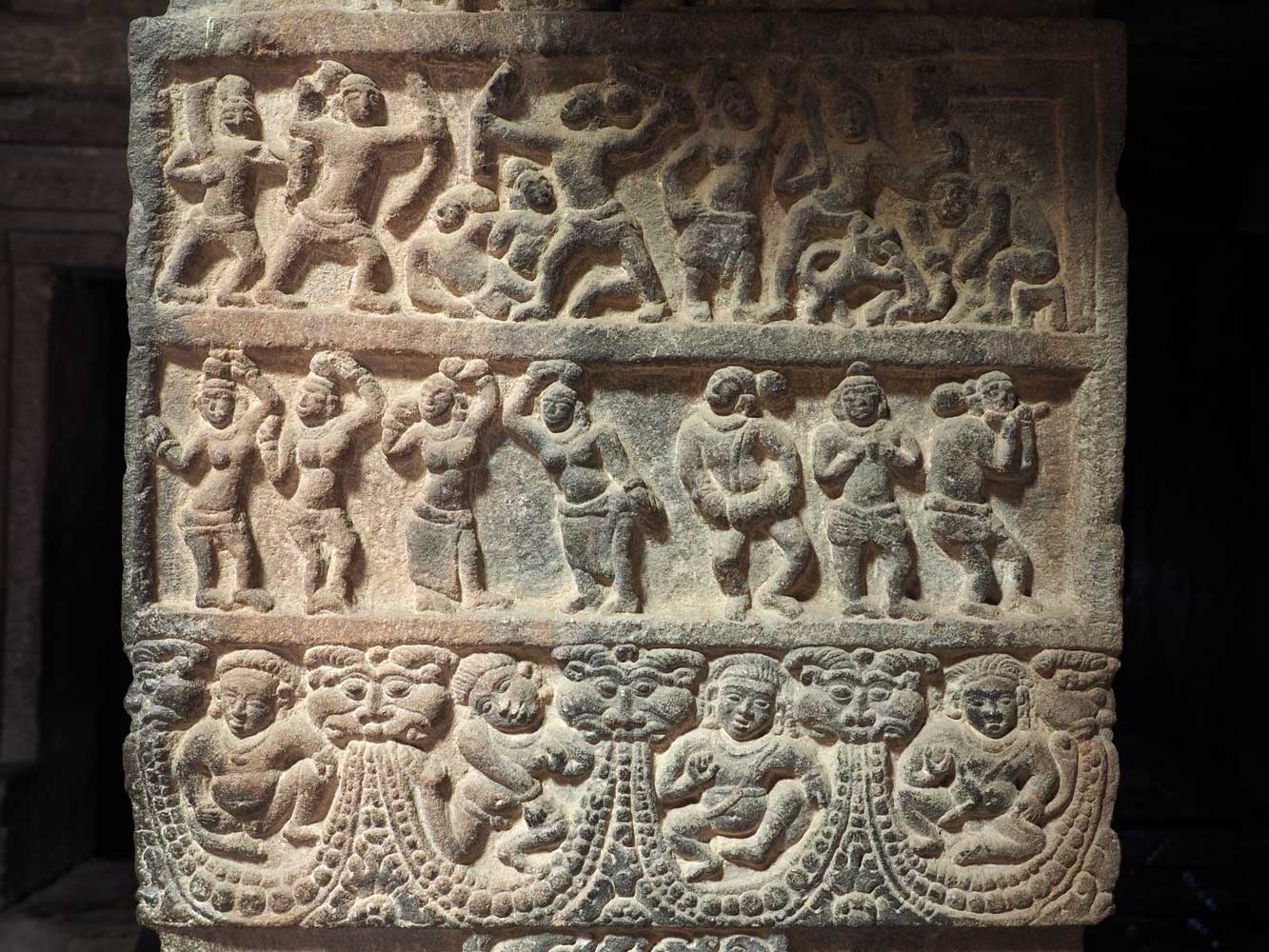
And similar carved pillars
One hundred 5th-8th-century temples lie scattered around the village of Aihole, and although most began as Vaishnavite, they later converted to Saivite. Durga Temple—the star attraction here—originally honored the Sun God Surya and has an unusual curved end around the sanctum. (Rs. 300) I also especially liked the finely decorated Ladkhan Temple, which like the Durga one started with devotion to Surya, then switched to Shiva.
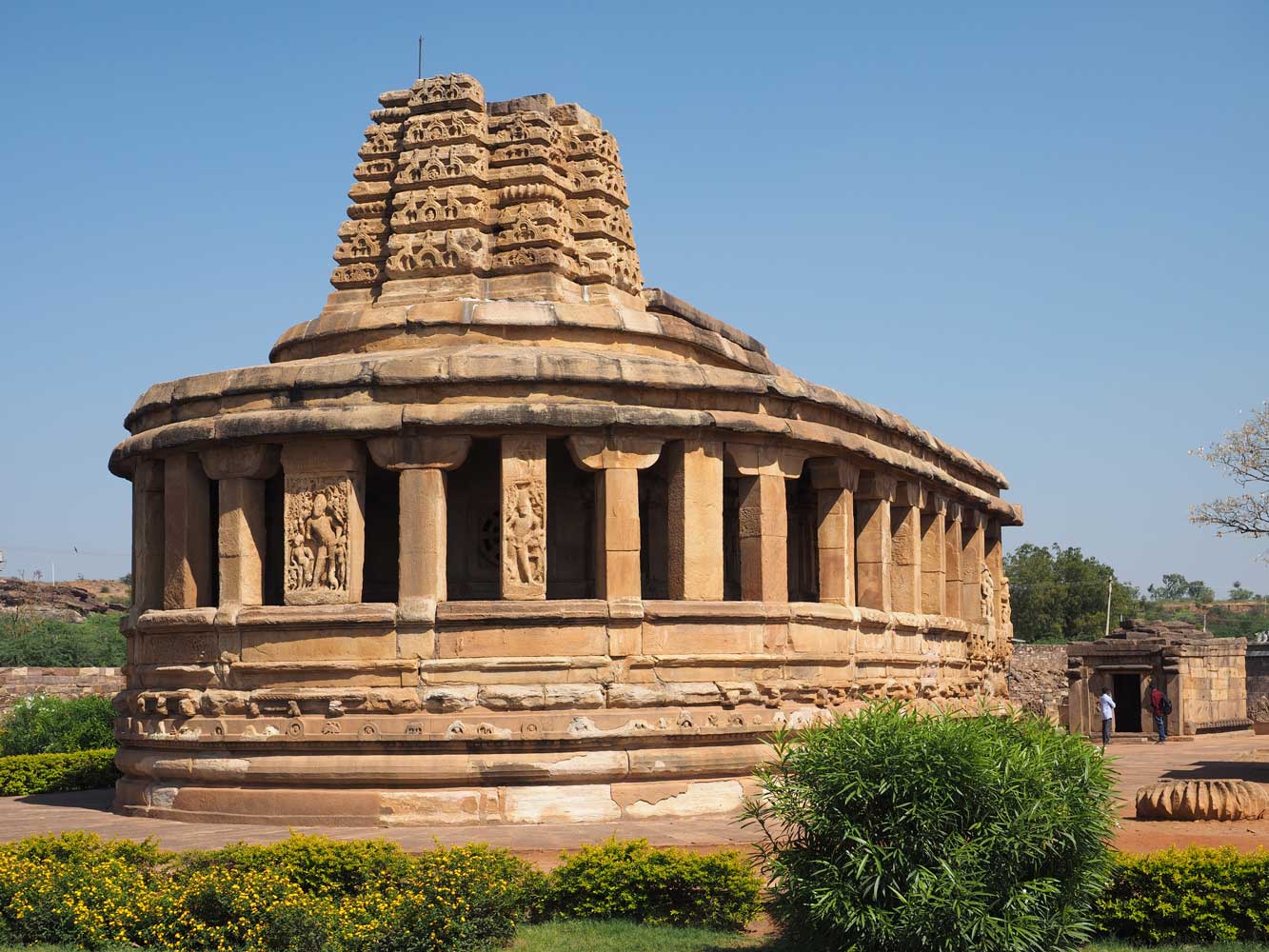
Durga Temple (late 7th or early 8th century) has an unusual semi-circular
gallery around the sanctum.

This snake god, on the ceiling of the porch, is one of many carvings inside
and outside of Durga Temple.

I wonder how workers made these ‘turned’ columns in a shrine near Durga
Temple.
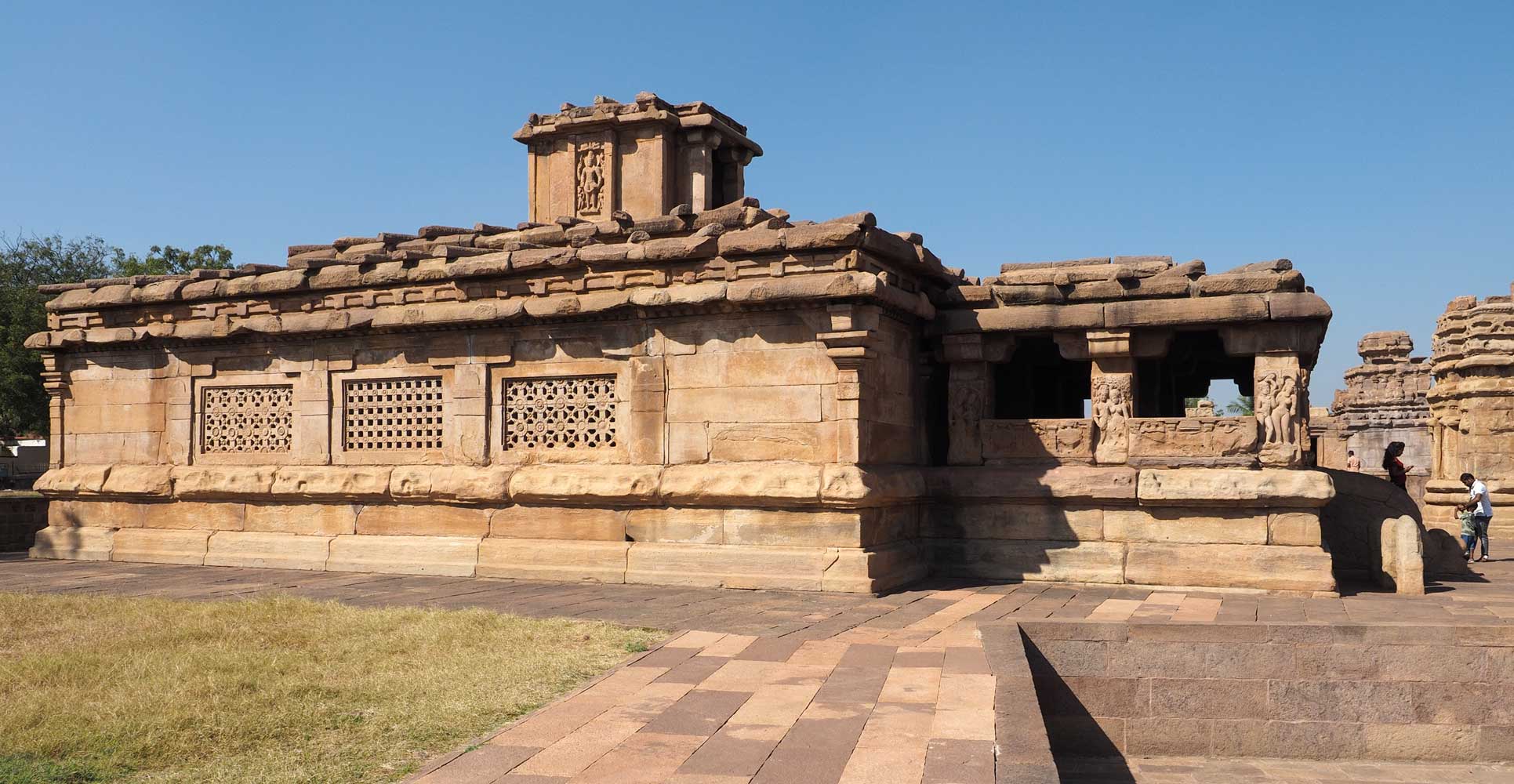
Ladkhan Temple takes its name from a person who resided here.
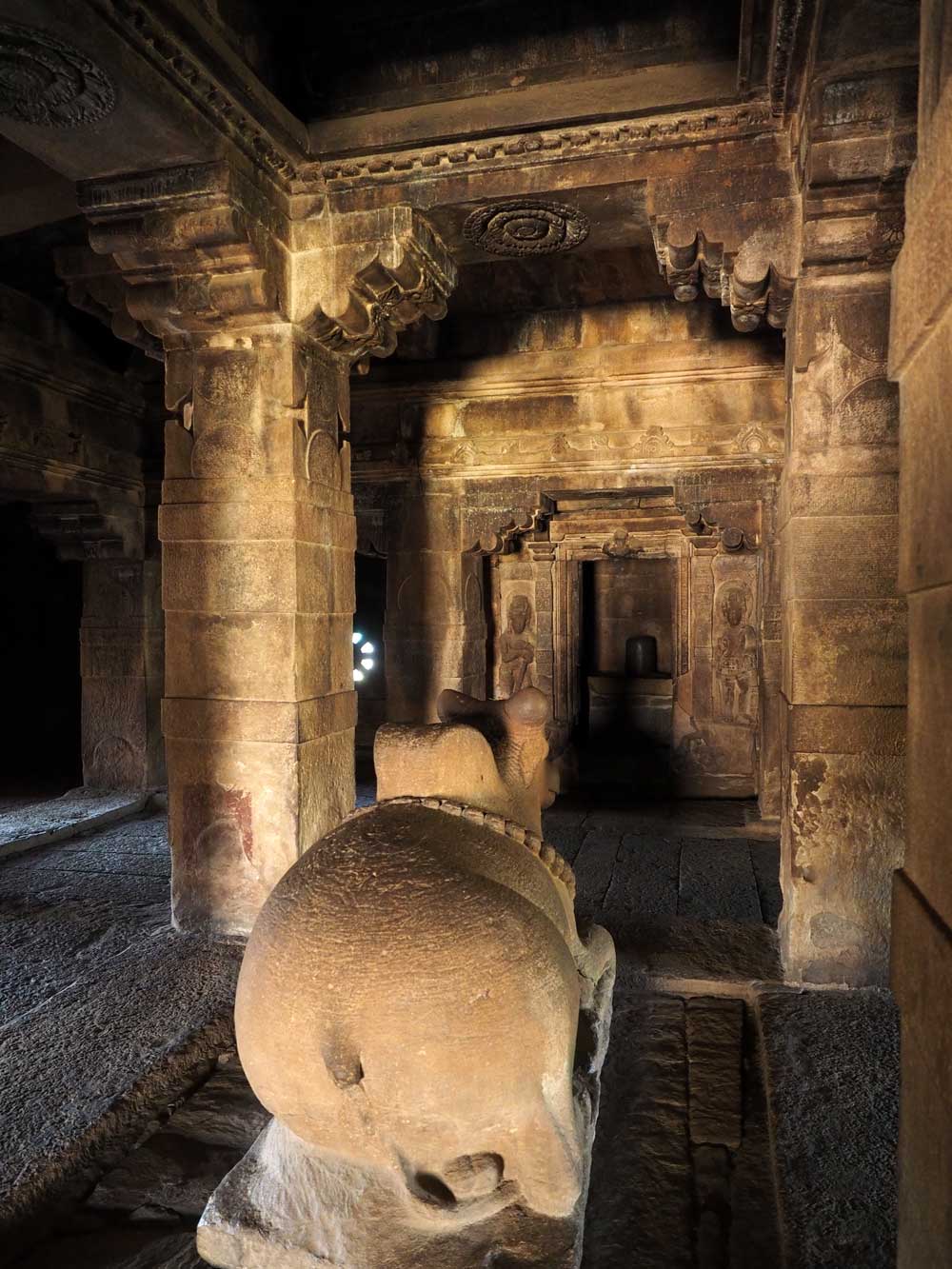
Nandi and Shiva inside Ladkhan Temple
Next we went to nearby Huchchimalli Temple Complex, a well-preserved Shiva temple with a fine stepped well in front.

Huchchimalli Temple is famed for its carvings.
The 6th-century rock-cut shrine Ravanaphadi represents Shiva with a lingam and has a large image of him dancing with ten arms. A pillar, a time-worn Nandi, and small shrines stand outside the well-decorated shrine.

Ravanaphadi is similar, though smaller, than the caves at Badami.

Wonderful sculpted figures reside here.
The Mallikarjuna Complex has five shrines of 5th-10th centuries and a tank.
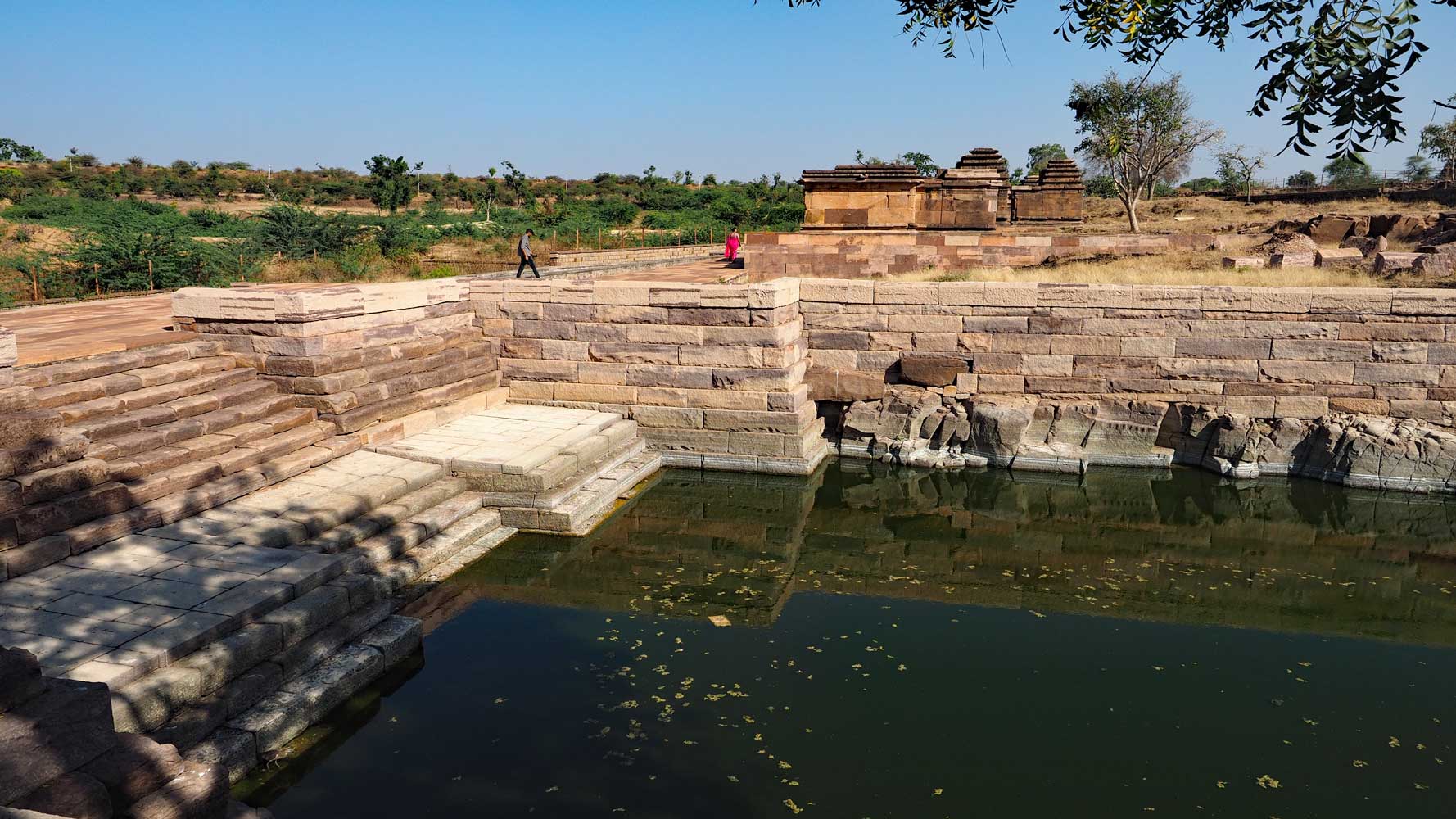
Tank and several of the shrines of the Mallikarjuna Complex
My driver then offered to take me on a bumpy dirt lane to the bottom of a long flight of stone steps to Meguti Jain Temple. The effort provided a fine panorama over Aihole and its temples. At the summit I reached the temple set on a flat field. The temple has a rooftop shrine, though the interior ladder to it had crumbled.

Meguti Jain Temple stands at the center of a flat-topped hill.
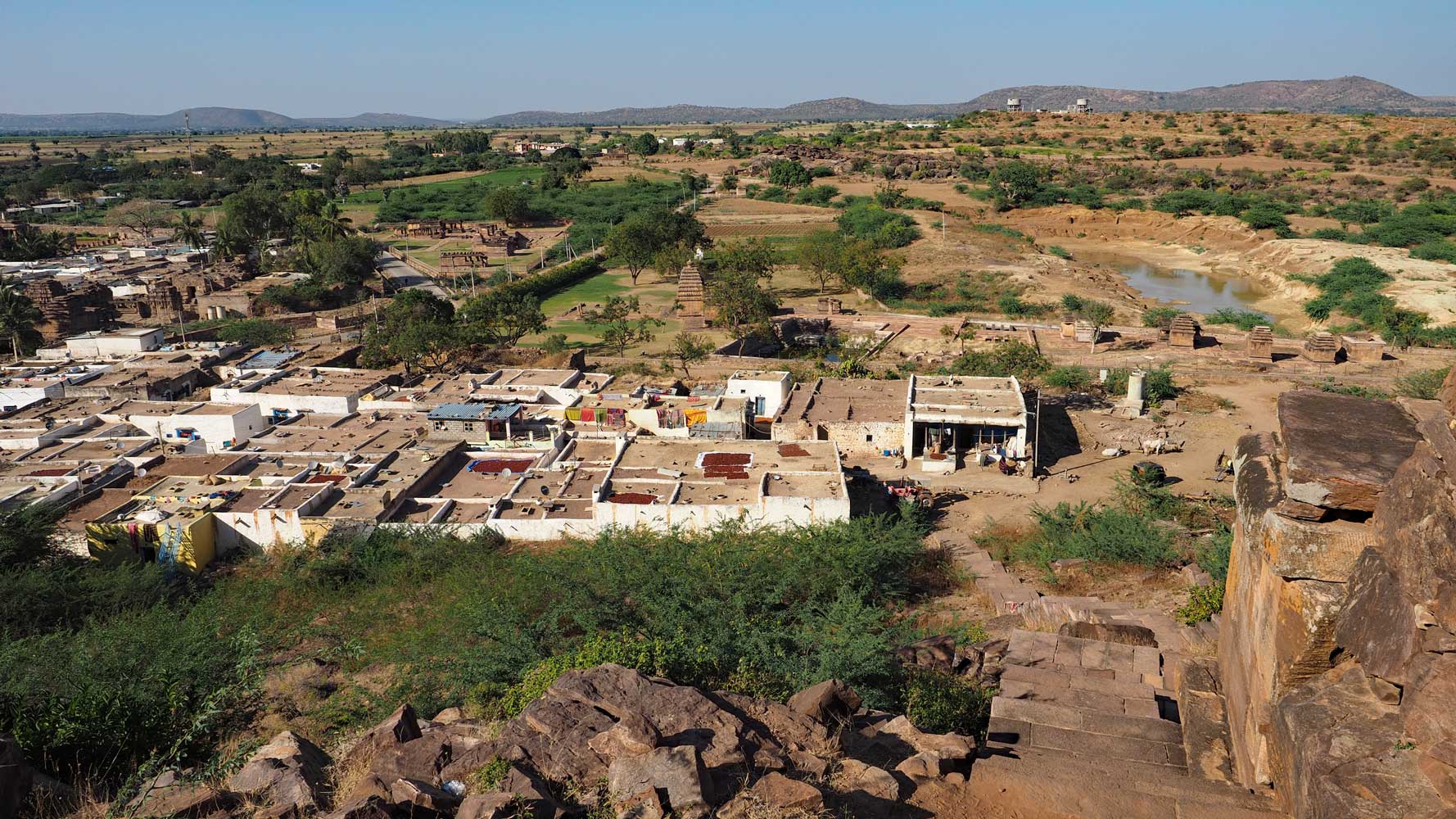
Temples pop up in many places in Aihole! (View from steps to Meguti Jain
Temple)
We departed Aihole and traveled back roads to Mahakuta, a very pretty and well shaded Shiva temple complex. A spring-fed pool attracts young men for a swim, and although I was told that women are permitted to swim too, they all sat on the railing snapping pictures with their phones. Two large temple carts parked in a shelter come out for annual festival.

Cooling off in a pretty setting at Mahakuta

Shiva shrines line up at Mahakuta.
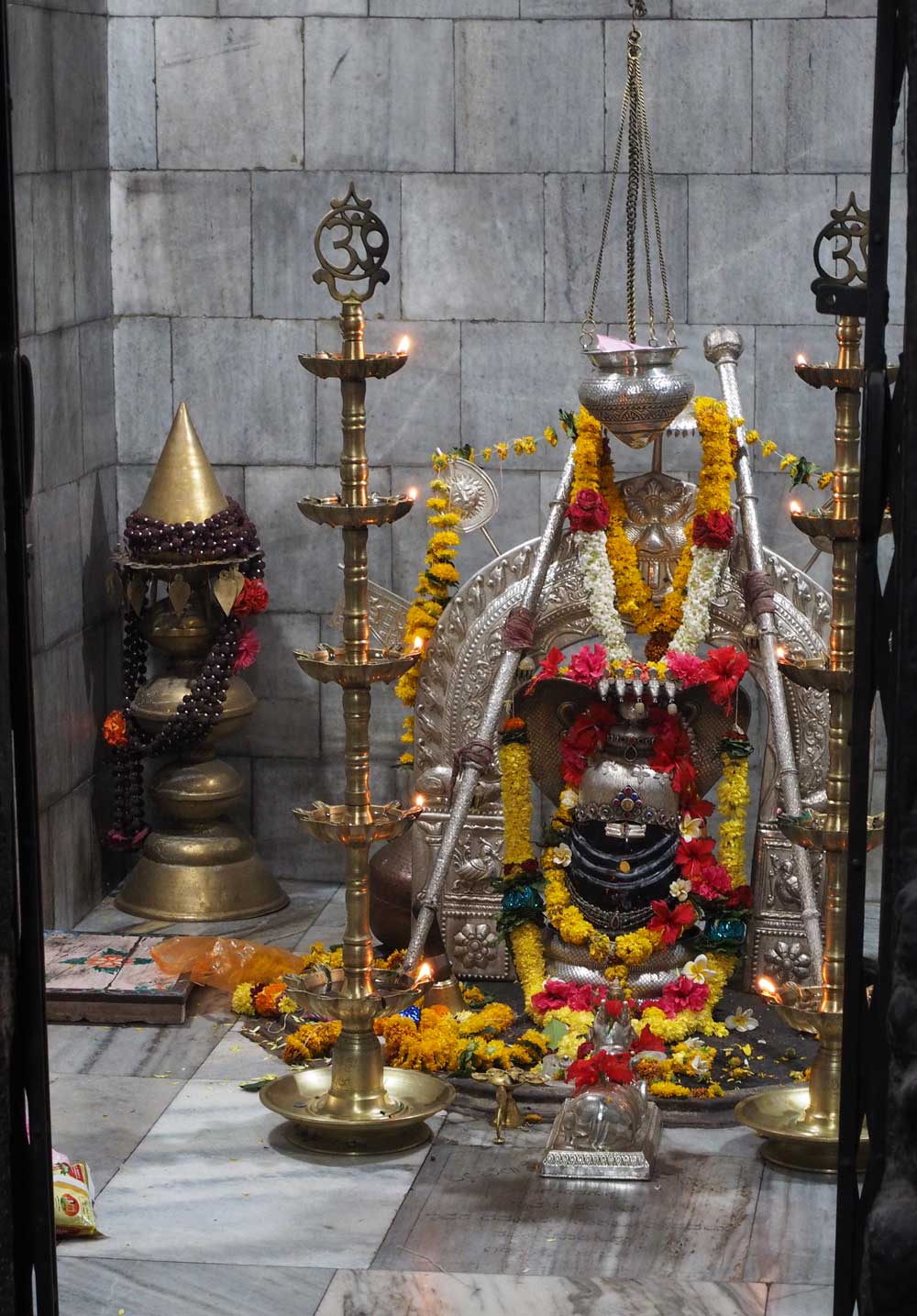
Silver-clad Shiva lingam in a temple at Mahakuta
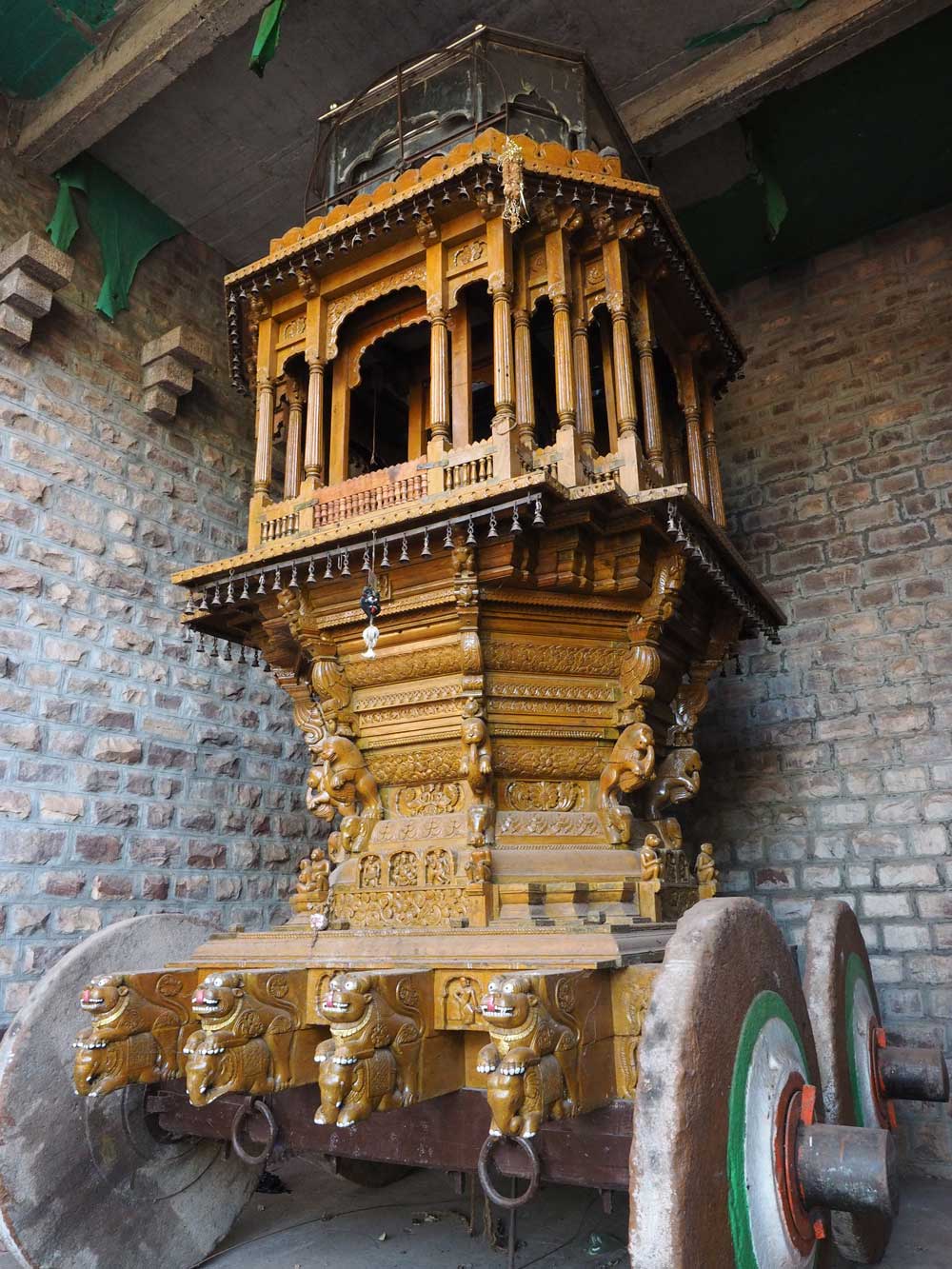
One of the temple carts at Mahakuta
My driver showed me a photo of an even loftier temple cart at Shivyoga Mandir, then took me to there. Perhaps the world’s largest wooden chariot, it’s enclosed in a towering shelter, which visitors can pay Rs. 5 and climb up to two viewing levels. Outside a grooved track provides a place for the two-sided temple cart to roll—pulled by 300 men—during its festival.

Upper stories of the chariot; I couldn’t get a photo of the entire structure
within the narrow confines of the shelter.

This guru had an honored position in an upper level of the chariot.
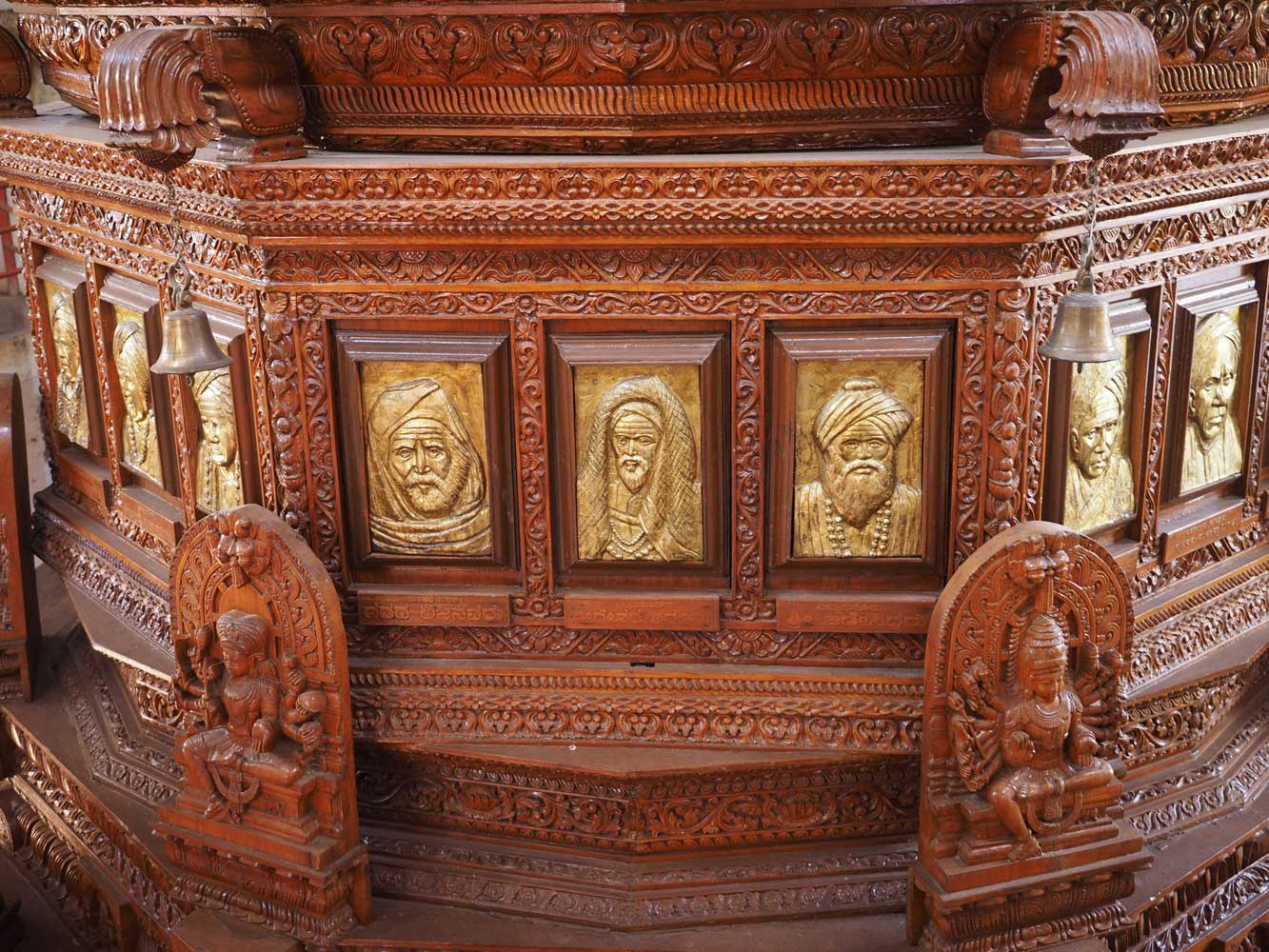
Other famous faces among the intricate woodwork
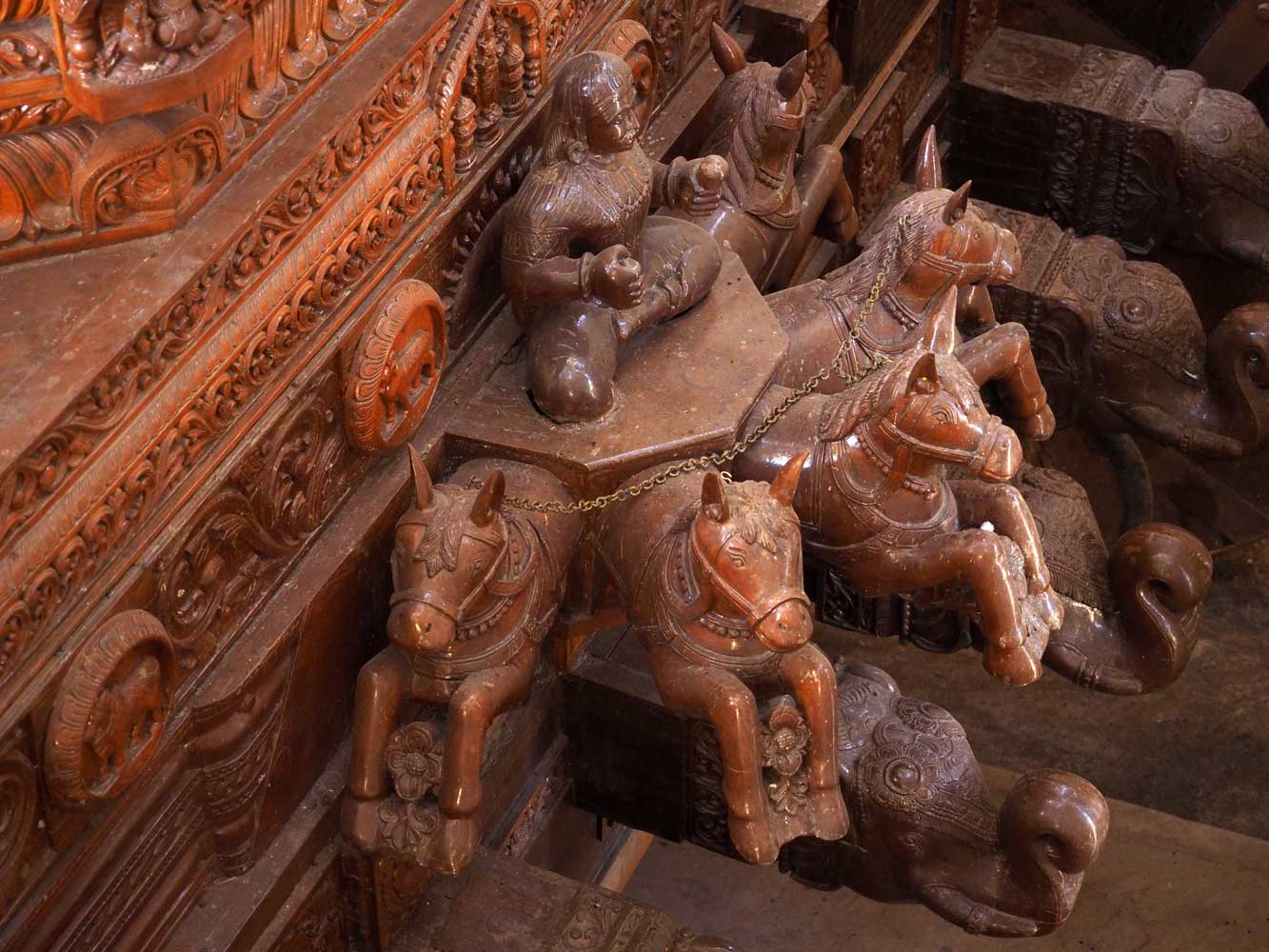
Five horses ‘pull’ the chariot (with a little help). A set of horses on the
other side ‘pull’ for the return direction.
Closer to Badami, my driver brought me to a festival set beside the huge tank Haridra Teertha where, the temple cart Banashankari Devi Chariot stood outside. Eating and shopping seemed the main activity for the crowds this evening. Back at my hotel I had a North Indian korma with rice for dinner.

Powders and other notions at a temporary stall on the festival grounds
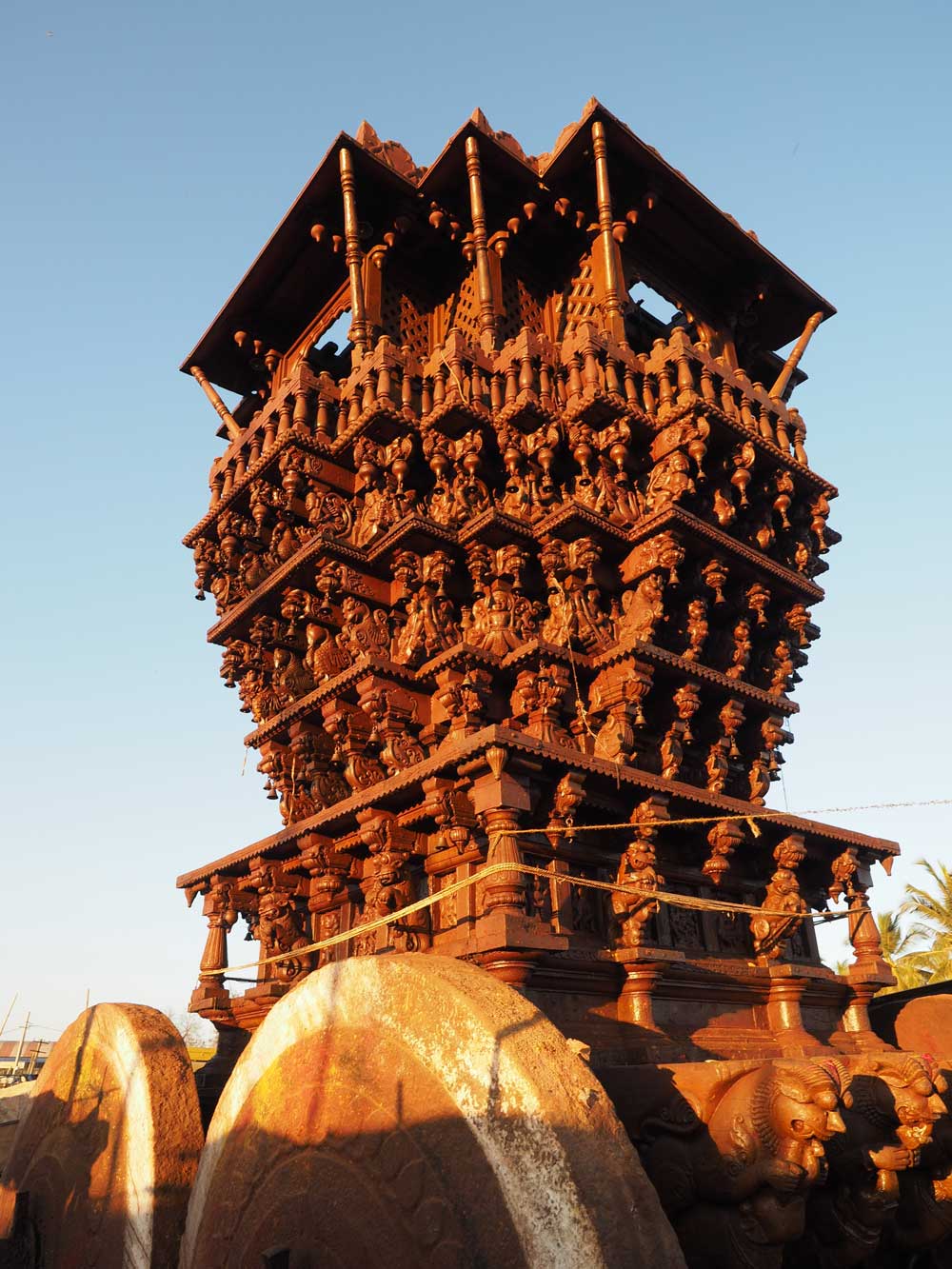
A temple cart will likely roll during the festival.
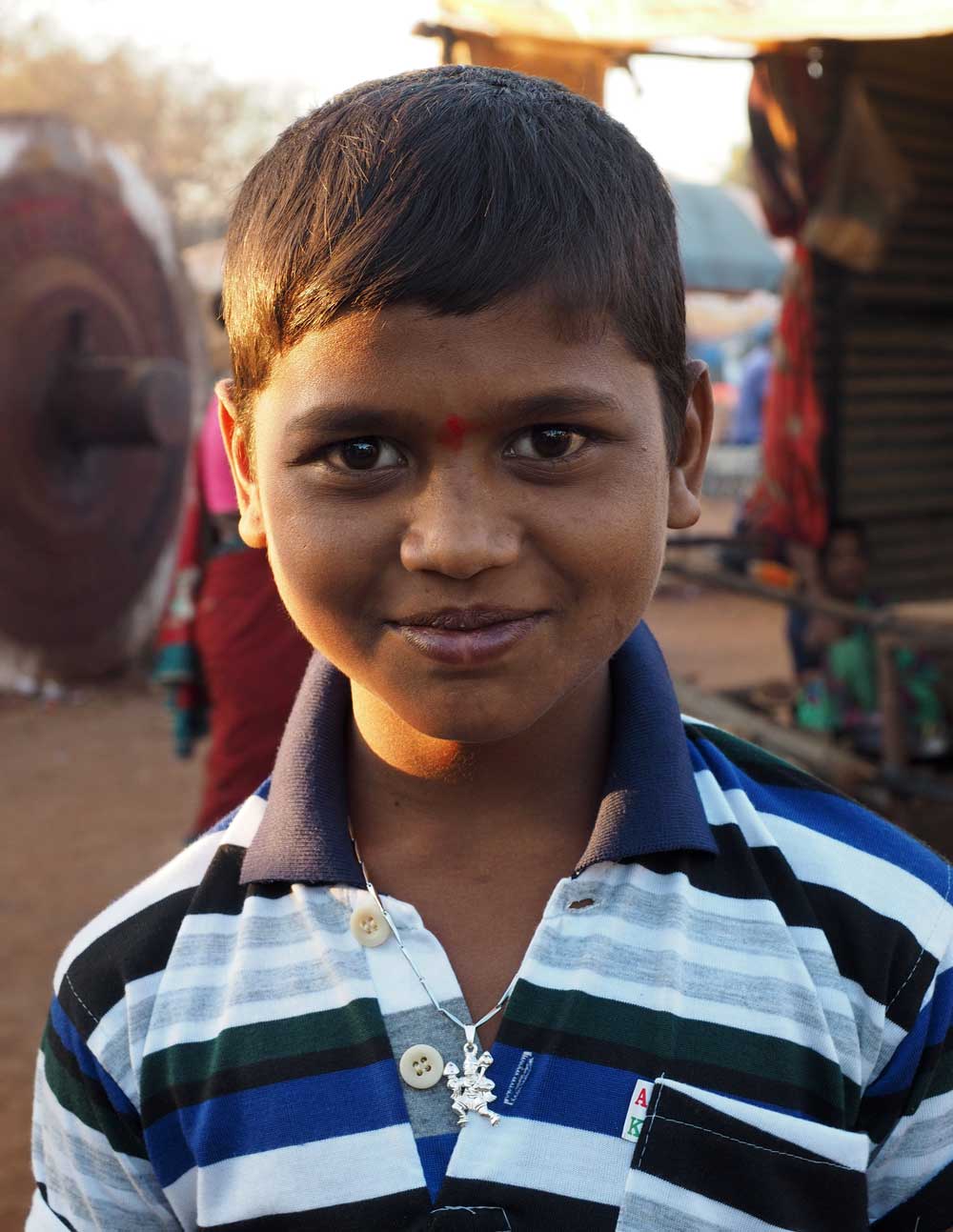
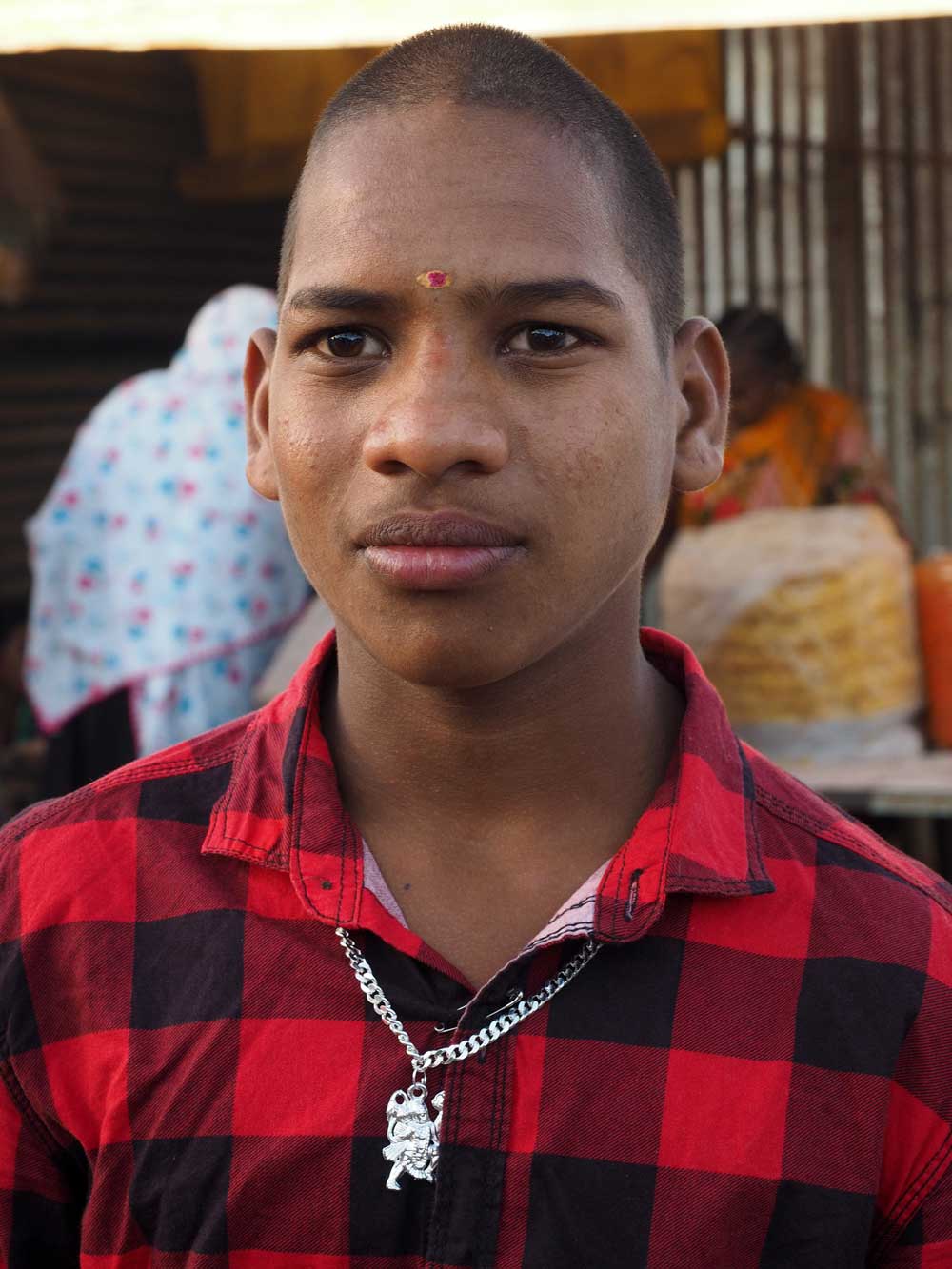
Local boys at
the festival
On to Vijayapura (Bijapur)
Back to beginning of “Backpacking 2020: India, Singapore, and Philippines”